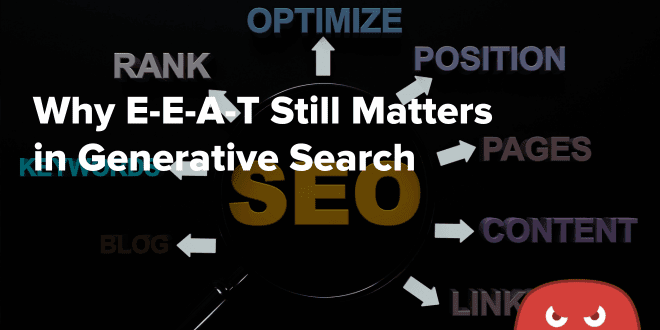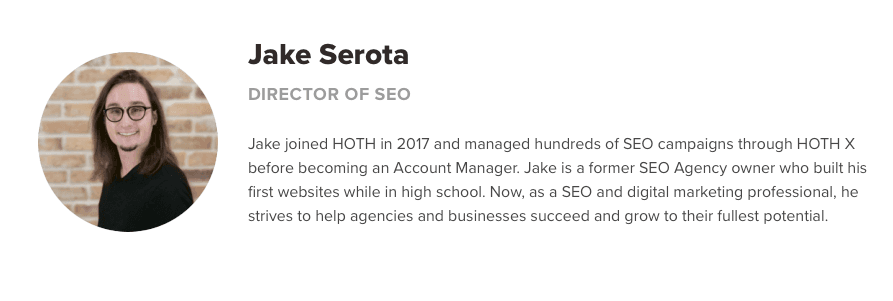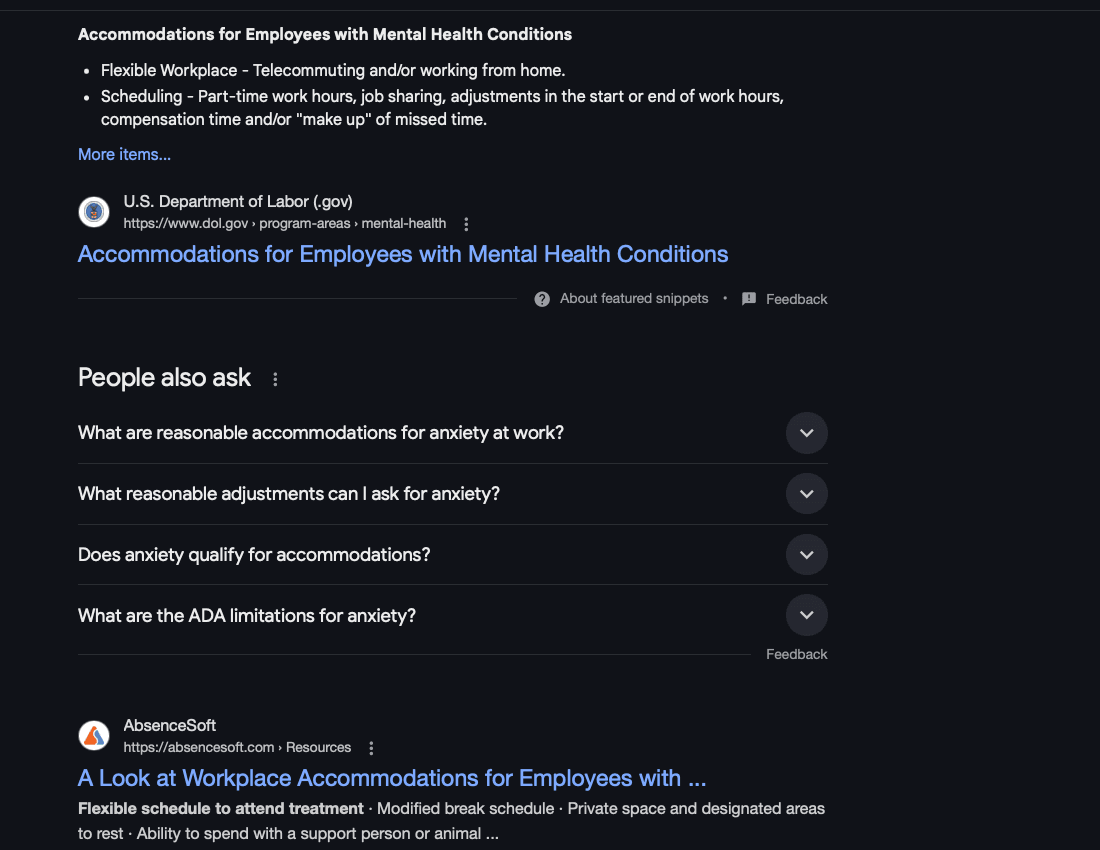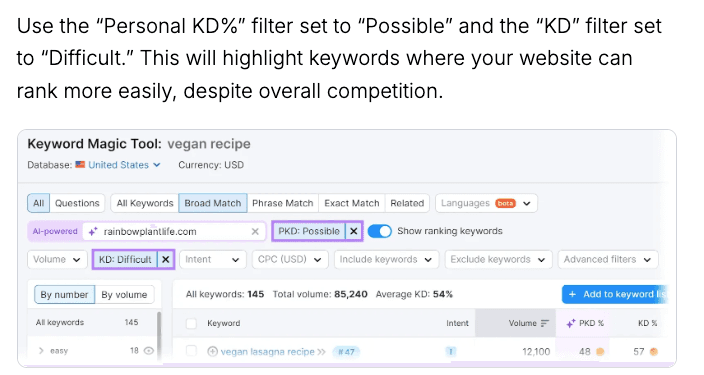
- Experience – showcasing that you have first-hand experience with a topic (recounting real-world experiences, sharing images, etc.)
- Expertise – demonstrating that you have real expertise on the subject at hand (sharing testimonials, reviews, and client stories)
- Authoritativeness – showing you’re an authority in your field by having other reputable websites link back to your content (backlinks)
- Trustworthiness – Using a combination of the three other factors and displaying strong trust signals (HTTPS, SSL certificate, strong presence on social media)
How AI Uses Trust Signals
Generative AI search tools like Perplexity and ChatGPT use brand mentions and trust signals to ensure they pull high-quality content from the internet. These trust signals include:- TLD (Top-level domain) signals – AI tools trust content coming from domains like .gov, .edu, and .org the most due to their exclusivity (i.e., only government institutions can receive a .gov, and only educational institutions can receive a .edu, and so on). Established media outlets and news websites also carry lots of trust.
- Source citations. Generative AI tools will check to see that you back up any claims you make in your content with external links to trusted studies, surveys, whitepapers, and original sources.
- Content that ranks well on search engines and is cited frequently online (i.e., content that’s linked to a lot and appears on user sites like Reddit and Quora).
- Update frequency. This is a big one because AI tools want to present the most up-to-date information in their generative responses. Therefore, updating your content often is a must.
- Author credentials. Tools like ChatGPT will check author bios to confirm their expertise and credentials in their respective fields.
 This means if your content is ranking well, you have a higher chance of appearing in generative AI responses.
This means if your content is ranking well, you have a higher chance of appearing in generative AI responses.
Ways to Build E-E-A-T Into Your Content
Okay, now let’s explore the top ways you can exhibit E-E-A-T in your content. Doing so will not only improve your search rankings on Google but will also boost your visibility on AI Overviews and in AI tools like ChatGPT. Let’s start with experience, which is the first E in E-E-A-T. Before December 15th, 2022, there was only E-A-T (expertise, authoritativeness, and trustworthiness). Google added the extra E to include experience because:- There was an abundance of fake reviews in Google’s search results (where the reviewer had no direct experience with the product).
- Websites that have first-hand experience with a topic will provide fresh, real-world insights.
Writing detailed author bios with credentials
Next, let’s move on to expertise. Google and AI tools pay close attention to author bios when assessing the quality of a piece of content. So, if your content doesn’t cite an author or provide next to no information about their experience, you’re missing out! You’ll notice that every one of our blogs is attributed to an experienced HOTH member, along with a detailed bio breaking down their credentials and experience: Well, this is not by mistake!
Including detailed author bios boosts our E-E-A-T (the second E, specifically) and lets Google’s AI know that we’re trusted digital marketing experts.
You can easily replicate this tactic by:
Well, this is not by mistake!
Including detailed author bios boosts our E-E-A-T (the second E, specifically) and lets Google’s AI know that we’re trusted digital marketing experts.
You can easily replicate this tactic by:
- Attributing each article to an expert member of your team.
- Building author bios that show off their experience and list their credentials.
- Linking to each author’s LinkedIn profile or original website.
Citing original research and well-known sources
Remember how we said that AI tools want to see cited sources from TLDs like .gov and .edu? Well, it’s true, so you should cite reputable websites and sources to back up all your claims. Whenever possible, opt for a .org, .gov, or .edu website to cite as a source. For instance, let’s say you’re writing an article about providing reasonable accommodations for employees who have extreme anxiety. You recommend providing a flexible workplace but want to include a reputable source to back that up. Looking at the Google results, which website do you think is better? Obviously, linking to the U.S. Department of Labor’s website will carry more clout than linking to a software provider. Also, the TLD is .gov vs. .com, so the choice should be clear.
Obviously, linking to the U.S. Department of Labor’s website will carry more clout than linking to a software provider. Also, the TLD is .gov vs. .com, so the choice should be clear.
Frequent updates and transparency
Lastly, AI tools favor content that’s frequently updated with accurate information. They also appreciate transparency, as evidenced by this response from ChatGPT: Notice that it says clear timestamps, as this is incredibly important. Therefore, you should make all your site data transparent so that AI tools can access it. We’re talking timestamps, dates, updates, and editorial notes.
Notice that it says clear timestamps, as this is incredibly important. Therefore, you should make all your site data transparent so that AI tools can access it. We’re talking timestamps, dates, updates, and editorial notes.
Real-World Examples of High E-E-A-T Pages in AI Overviews
Does exhibiting E-E-A-T actually lead to higher visibility on AI tools and in AI Overviews? Let’s gather some evidence to prove our claim. Semrush will be our guinea pig for this experiment, as according to Ahrefs’ Site Explorer, they’ve been appearing in lots of Google AI Overviews. Such is the case for the keyword ‘what is keyword difficulty’: We can tell that it generates an AI Overview by the symbol.
Sure enough, searching for the keyword on Google triggers an AI Overview (with Semrush’s article cited as the top source):
We can tell that it generates an AI Overview by the symbol.
Sure enough, searching for the keyword on Google triggers an AI Overview (with Semrush’s article cited as the top source):
 Taking a look at the blog, it’s clear why it appeared in the AI Overview; it exhibits E-E-A-T very well.
For one, the post is incredibly detailed and demonstrates first-hand experience with Semrush’s tools (complete with plenty of images):
Taking a look at the blog, it’s clear why it appeared in the AI Overview; it exhibits E-E-A-T very well.
For one, the post is incredibly detailed and demonstrates first-hand experience with Semrush’s tools (complete with plenty of images):
 Also, they include a detailed author bio to demonstrate expertise:
Also, they include a detailed author bio to demonstrate expertise:
 Semrush’s team consists of digital marketing experts, so it’s no surprise that they excel at demonstrating E-E-A-T (and are appearing in AI responses and overviews as a result).
Semrush’s team consists of digital marketing experts, so it’s no surprise that they excel at demonstrating E-E-A-T (and are appearing in AI responses and overviews as a result).
Wrapping Up: Proving Your Authority to AI
Before we leave you, here’s a helpful E-E-A-T checklist to use whenever you’re creating new content:- Demonstrate experience by sharing customer success stories, including high-resolution photos, and sharing original insights that you can’t find anywhere else (like recounting a story that actually happened to you)
- Include detailed author bios (with links to their business profiles) to show your expertise on the topic.
- Link out to trusted sources, original research, and whitepapers to back up your claims.
- Build valuable backlinks from trusted media outlets and news sites.
- Frequently update your content and include timestamps and editorial notes.
The author
Rachel Hernandez
description
Previous
The Role of Backlinks in GSO and AI Overviews
Next
Optimizing Content for AI Overviews: 7 Best Practices
Discussion
Comments
Ferventers
September 23rd, 2025
Overall, a great read. It’s a useful reminder that even in AI-powered search, human-oriented trust factors are still very important.
Louise Savoie
April 16th, 2025
Great read! E-E-A-T is definitely still a big deal—even with AI-driven search results. Thanks for sharing!
